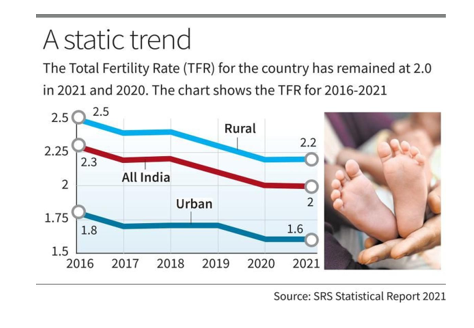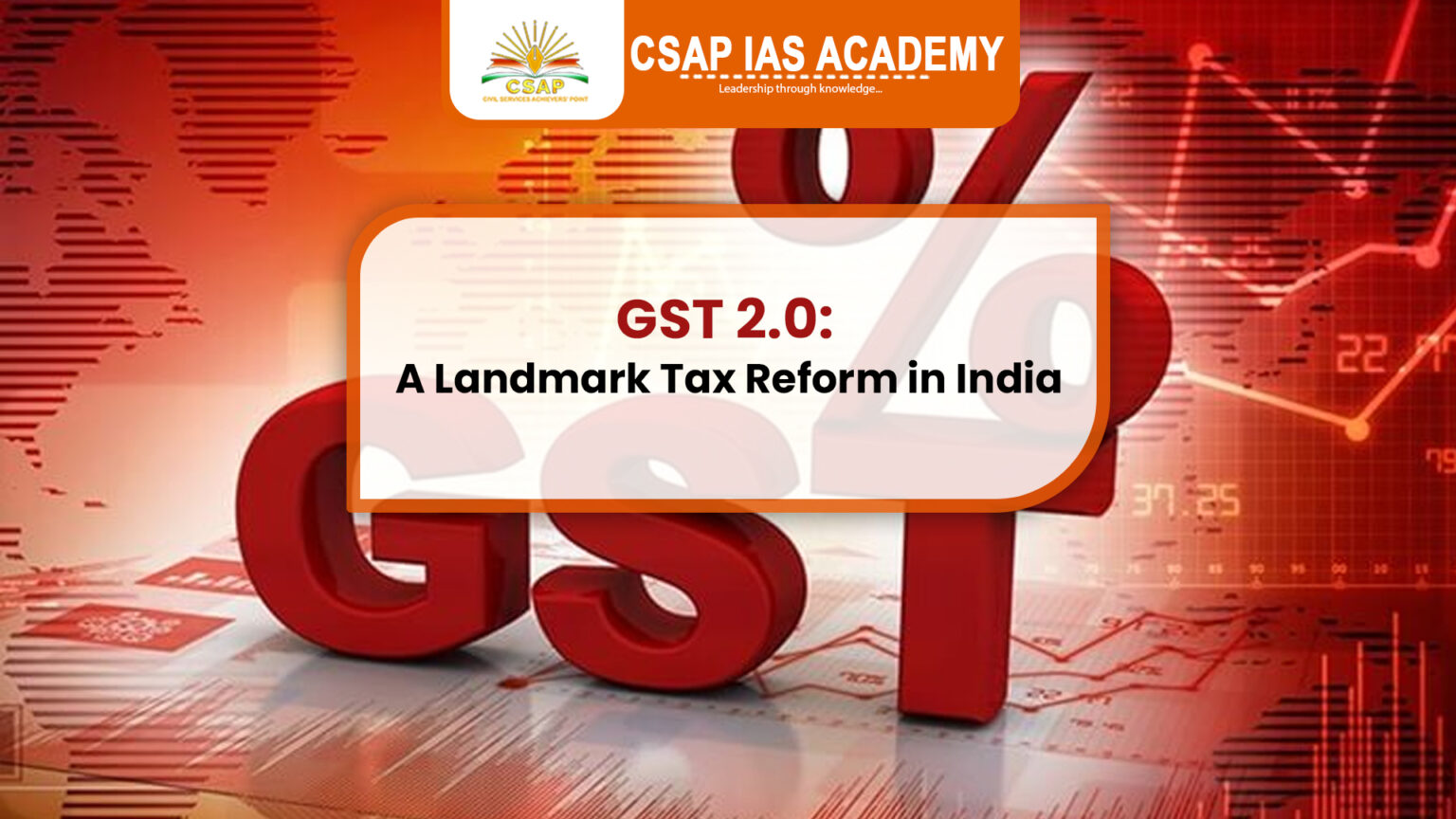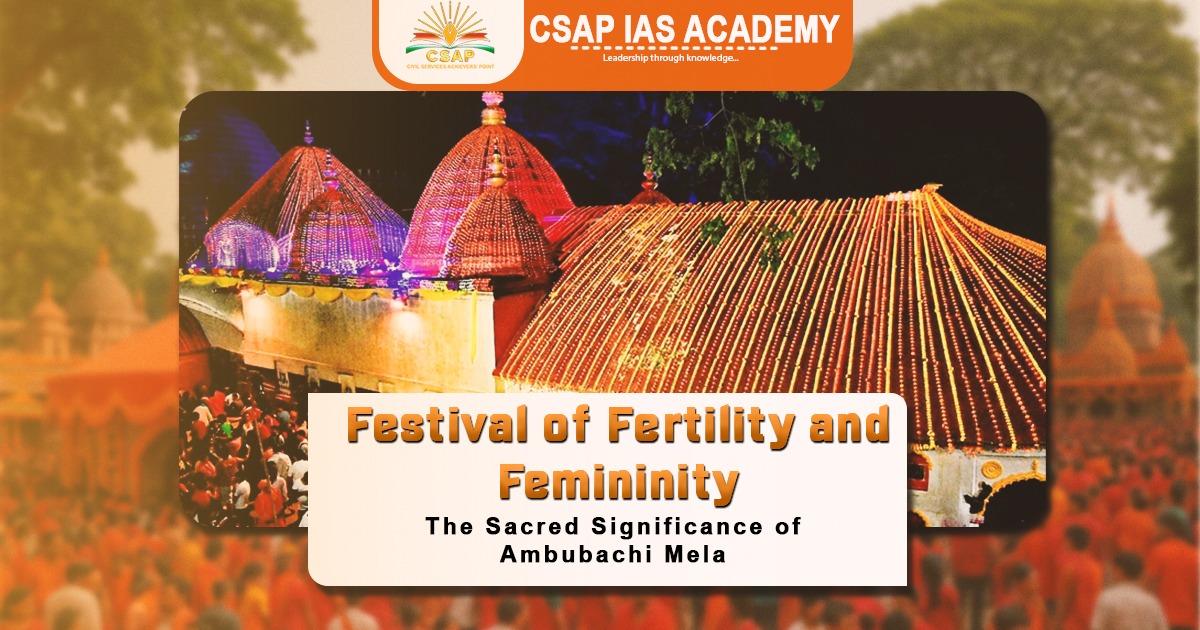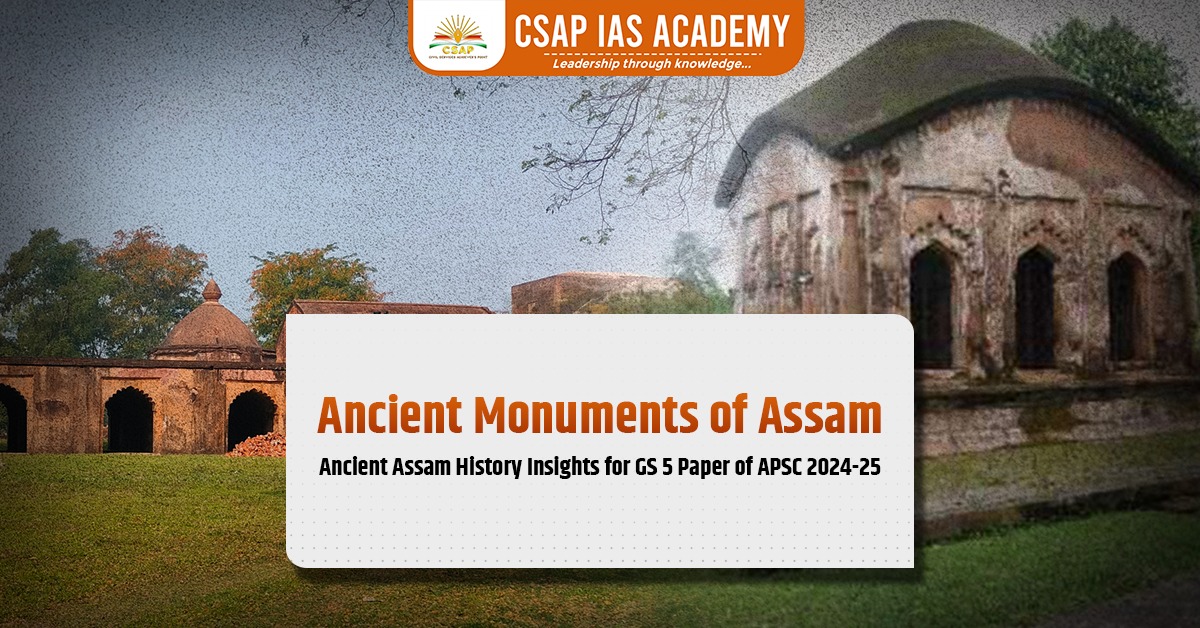Demographic trends in India are undergoing a major shift, as highlighted in the SRS 2021 Report. In this blog, we will discuss key insights, including the decline in the Total Fertility Rate (TFR), changing age structure, growing elderly population, and rising age at marriage. These trends have far-reaching implications for policy planning, economic growth, and social development.
Demographic Trends in India: Insights from the SRS 2021 Report
The Sample Registration System (SRS) Statistical Report for 2021, released by the Registrar General of India (RGI), provides critical insights into the demographic trends in India, especially concerning Total Fertility Rate (TFR), age distribution, elderly population share, and marriage patterns. The findings offer vital implications for policy formulation, especially in the context of India’s evolving demographic dividend.
Total Fertility Rate (TFR)
The Total Fertility Rate, defined as the average number of children a woman would bear during her reproductive years, remains constant at 2.0 in 2021, mirroring the figure from 2020. This stabilization marks a significant achievement in India’s demographic journey. Importantly:
- Replacement-level fertility is considered to be 2.1, the threshold at which a population exactly replaces itself from one generation to the next, excluding migration.
- India achieving a national TFR of 2.0 implies it has moved below the replacement level, signaling the onset of population stabilization.
- Bihar continues to have the highest TFR at 3.0, indicating lag in demographic transition, while Delhi and West Bengal report the lowest TFR at 1.4.
Several other states have TFRs below or close to replacement level:
- Tamil Nadu, Andhra Pradesh, Jammu & Kashmir, Kerala, Maharashtra, Punjab: 1.5
- Himachal Pradesh, Telangana, Karnataka: 1.6
- Odisha, Uttarakhand: 1.8
- Gujarat, Haryana: 2.0
- Assam: 2.1
This indicates that the southern and western states are leading in fertility reduction, while northern and eastern states still reflect relatively higher fertility trends.

Changing Age Structure and Demographic Dividend
One of the key trends highlighted in the report is the shift in age composition:
- The 0–14 age group share has declined from 41.2% in 1971 to 24.8% in 2021, a clear indicator of falling birth rates.
- The working-age population (15–59 years) has increased from 53.4% to 66.2%, indicating the country is in the midst of a demographic dividend phase, where the working-age population exceeds dependents.
- The elderly population (65+ years) has increased from 5.3% to 5.9%, while the 60+ population rose from 6% to 9%.
This dual trend presents both opportunities and challenges:
- On one hand, the rising working-age population offers potential for economic productivity.
- On the other, the rising elderly population necessitates geriatric healthcare, pension systems, and social security measures.
State-wise Elderly Population Trends
Kerala leads with the highest 60+ age group population at 14.4%, followed by:
- Tamil Nadu: 12.9%
- Himachal Pradesh: 12.3%
In contrast, states with lowest elderly share are:
- Bihar: 6.9%
- Assam: 7%
- Delhi: 7.1%
This divergence reflects the differential pace of demographic transition and economic development. States like Kerala and Tamil Nadu, with early fertility decline and higher human development indices, are aging faster.
Age at Marriage and Fertility Behavior
The mean age at effective marriage for females has increased from 19.3 years in 1990 to 22.5 years in 2021. This delay in marriage:
- Contributes to lower fertility rates
- Reflects improvement in education, awareness, and female empowerment
- Indicates a positive socio-cultural transition, which could further influence maternal and child health outcomes.
Significance of SRS and Policy Implications
With the decadal Census delayed since 2021, the SRS remains the most critical demographic source, covering 8,842 sample units and over 84 lakh population. It provides annual fertility and mortality estimates at both national and state levels.
Policy implications include:
- Targeted interventions in high-TFR states like Bihar, Uttar Pradesh, and Jharkhand through family planning and women’s education.
- Preparing for an aging society in states like Kerala and Tamil Nadu via health infrastructure and social welfare schemes.
- Labour market and skill development strategies to harness the working-age population.
- Promoting gender-sensitive population policies focusing on delaying age of marriage, improving reproductive health, and increasing women’s workforce participation.
Contradiction with Budgetary Narrative
Interestingly, the 2024 Interim Budget announcement of a high-powered committee to address fast population growth seems at odds with the SRS data, which clearly reflects slowing fertility and population stabilization. This underlines the need for evidence-based policymaking grounded in empirical demographic data.
Conclusion
The SRS 2021 report underscores that demographic trends in India is well underway, with fertility stabilizing and age structures shifting. However, this transition is not uniform across regions, necessitating differential policy responses. As the country awaits the next Census, SRS remains indispensable in tracking demographic changes and aligning them with sustainable development goals (SDGs) and national policy priorities.
Read: India UK Free Trade Agreement
Download App:









